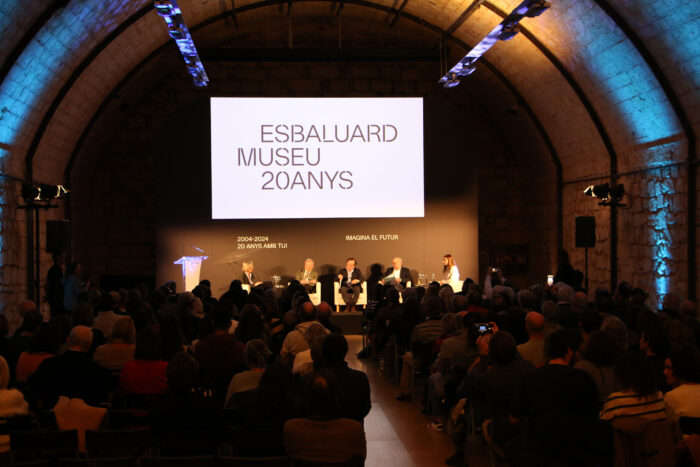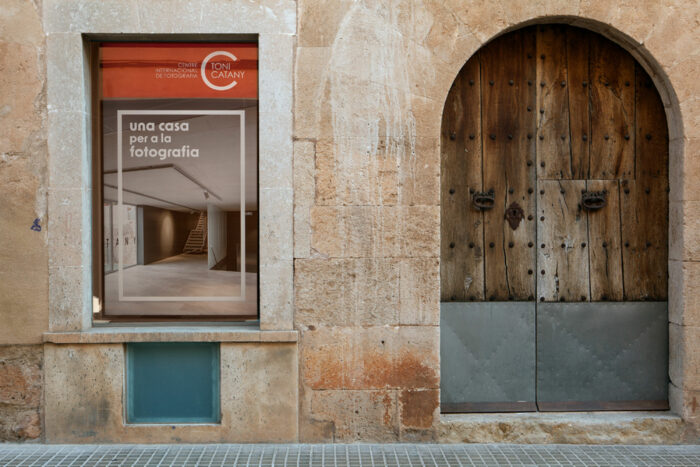This website uses cookies so that we can provide you with the best user experience possible. Cookie information is stored in your browser and performs functions such as recognising you when you return to our website and helping our team to understand which sections of the website you find most interesting and useful.
Many unfairly avoid the south coast east of Palma. However, in the old village of Llucmajor you can discover the birthplace of a famous son of the island. In 1942, the photographer Toni Catany was born in a modest stone building that last year was inaugurated in his honor as a photo gallery.
Translation of the article published by Baumeister, March 2024
Text: Katharina Matzig
Download PDF

Longing for Mallorca
“This is a building that was constructed during the Covid-19 pandemic, with its different moments of isolation, distance and digitization. Yet here we had to produce something concrete, dense, manual in a distant and sometimes hopelessly archaic world. It was not easy,” said Josep Lluís Mateo, the architect of the remodeling
In spite of that, or maybe because of that? – the “International Center of Photography Toni Catany” simply turned out beautiful. In 2013 died the photographer, which the American magazine “Life” includes among the 100 best representatives of his field in the world. The self-taught photographer, famous above all for his still lifes, was born in 1942 in the village of Llucmajor in the south of Mallorca, long before the conquest of the island by tourism. Today, the small town has almost 40,000 inhabitants. Historically significant, the place first mentioned in 1259 due to the struggle between James III of Mallorca and Peter IV of Aragon in 1349, which led to the independence of the island. And in terms of building culture, Llucmajor today leaves the surrounding glamorous tourist resorts in the shade. After a foundation was founded a year after Toni Catany’s death, the Balearic Islands’ Department of Culture and Spain’s Ministry of Culture praised a competition in 2018 to turn his birthplace into a museum. First prize went to Josep Lluís Mateo; in 2021, Barcelona-based mateoarquitectura completed the 1,200-square-meter center, which now caters to local and global photographic culture, and of course, the memory of the city’s famous son.
Intrusions inside the block
From March 2023, more than 180,000 negatives and thousands of books from the photographic artist’s archive, rotating exhibitions and a varied cultural program are available to the public, with free admission. To create the necessary space, Josep Lluís Mateo merged Catany’s house with two neighboring buildings inside the block, which develop in the dense urban fabric of the old town. Two extensions rise above and connect transversely, so that not only space for the photographic cultural experience was created in the basement and on the first floor, but also on two upper floors in parts.
Committed to the spirit of the place, the house ensemble built in light stone and partly sand-colored plaster is closed towards the street. In keeping with the building tradition, it opens onto different interior courtyards. In keeping with the office’s approach, the existing structure was sensitively restored and the interplay between old and new is detailed with great precision and in a radically convincing manner.
Contemporary signs
The architects allowed themselves a few, clearly contemporary interventions on the facades of Carrer del Convent and Carrer Cardenal Rossell: the side entrance is deeply recessed and stands out in gray against the short street frontage, while stone brise soleils break the light. The roof pitch was changed. Visitors enter the museum through an archway leading along its long side, the passage under a new central transom leads to the central courtyard giving access to the ensemble. A new sandstone building is integrated into the courtyard between the old buildings and towers over the existing low-roofed structure. Here, in the stone courtyard and in the interior spaces, centuries-old relics, such as a staircase, a well, remnants of walls, enchant with the long building history. A glazed foyer provides orientation in the continuous space, its interior remains discreet: exposed concrete, natural stone, white stucco glow in soft tones, while a staircase seems to float slightly from the ceiling. Precisely placed openings and poetic light holes in the concrete provide a play of vivid light and shadow. The deep red hallway, a bit of blue and some yellow, add deliberate color accents. A luminous pavilion for education and outreach completes the ensemble in the fabric of the block.
The Mallorcan photographer was once awarded the Spanish National Photography Prize for his sensitivity to beauty, “there is enough repulsion in the world”, the “Diario de Mallorca” quoted the artist as saying. How beautiful that the International Center of Photography Toni Catany lives up to that demand. He would have liked it.


